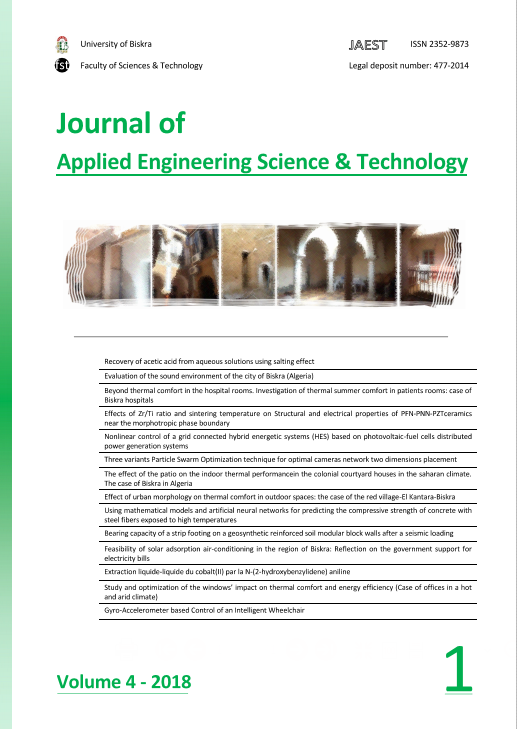Study and optimization of the windows’ impact on thermal comfort and energy efficiency (Case of offices in a hot and arid climate)
DOI:
https://doi.org/10.69717/jaest.v4.i1.82Keywords:
Windows of the facade, Thermal comfort, Energetic efficiency, Office building, Simulation, Hot and arid climateAbstract
Controlling the thermal environment and reducing the energy consumption of buildings across the façade are a difficult challenge for architects, especially in a desert climate. The windows in particular play an important role in the tandem of the thermal operation of the building and the comfort of the users. The objective of this article is to study and optimize the impact of windows, their material and proportional characteristics on the thermal comfort and energy efficiency of office buildings in a hot and arid climate. The investigation is based on an empirical approach (measurements taken in situ on real cases) as well as on a numerical simulation study with the TRNSYS program. Several parameters have been studied such as surface temperature, ambient temperature and energy consumption. The results showed that facade windows are a determining factor in the thermal exchanges between the building and its environment and that the key parameters that condition these exchanges are the windows ratio (glazed area) and the type of glazing. The judicious choice of the windows ratio combined with an appropriate choice of the type and composition of the glazing improves the thermal comfort of the users and ensures the energy performance of the building.













